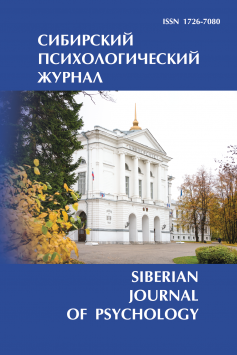From Loyalty to Addiction: Negative Aspects of Relations with a Brand
Modem marketing strategies and advertising have a significant role in fostering consumer loyalty towards certain brands. However, when the relationship with a brand is strengthened, consumption becomes more a means of self-identification than a tool to satisfy needs, thereby acquiring characteristics of behavioral addiction. Despite the extensive research conducted on brand loyalty, demonstrative and compulsive consumption, the phenomenon of excessive brand devotion, otherwise referred as brand addiction, remains understudied. In this regard, it is imperative to undertake a theoretical analysis of psychological underpinnings of excessive brand devotion. The aim of the present article is to conduct an analysis of the phenomenon of brand addiction, exploring its potential as a form of excessive devotion to a brand. In the context of theoretical analysis, the development of scientific interest in negative aspects of the relationship between a consumer and a brand is firstly considered and systematized. Secondly, the extant research focusing on transforming commitment into addictive behavior is summarized. Thirdly, an attempt to differentiate the concept of "brand addiction" from similar psychological phenomena, such as brand loyalty, compulsive and demonstrative consumption, is made. The study is founded upon theoretical analysis, with methodologies such as systematization, comparative analysis and logical synthesis being employed. The results obtained from this study are as follows. The author identifies brand addiction as a psychological state of a consumer, which includes affective and behavioral involvement in a certain brand, caused by an uncontrollable desire to possess the brand's goods. The phenomenon of brand addiction has been shown to manifest in a number of ways, including the experience of a sense of obligation to possess a particular brand, the adoption of irrational financial behaviors, feelings of irritation when unable to interact with the brand, excessive interest, and intrusive behavior towards others. In contrast to the concept of loyalty, addiction is distinguished by an incapacity to resist the consumption of goods from a specific brand, despite the availability of more economical alternatives. Despite the present paucity of evidence to support a classification of brand addiction as a behavioral addiction, the concept does not align with other concepts of brand loyalty, demonstrative consumption, and compulsive buying. Brand addiction is determined not by the qualities of a product, its status, or an attempt of emotional regulation, but by the "incorporation" of the brand personality into a consumer's identity
Keywords
brand,
brand addiction,
brand devotion,
irrational consumption,
loyalty,
demonstrative consumption,
compulsive buying,
maladaptive consumptionAuthors
| Shapoval Olesia A. | Higher School of Economics | oashapoval@hse.ru |
Всего: 1
References
Антонова, Н. В., Кумар, А., Солорева, М. А. (2016). Восприятие отечественного и зарубежного брендов одежда: российскими потребителями. Институт психологии Российской академии наук. Социальная и экономическая психология, 1(3), 174-202.
Антонова, Н. В., Морозова, В. Д. (2015). Взаимосвязь идентичности потребителя и индивидуальности бренда как фактор приверженности бренду. Социальная психология и общество, 6(4), 123-138.
Антонова, Н. В., Патоша, О. И. (2017). Восприятие брендов и стратегии потребительского поведения. М.: ИД ВШЭ.
Бабкин, А. Д., Коновалов, В. Н., Рыжкова, О. И. (2024). Психология в экономике бренда: влияние на потребительское поведение. Вестник науки, 1(12(81)), 48-54.
Бакотина, Р. Р., Скоробогатых, И. И. (2024). Оценка эмоциональной привязанности российских потребителей к парфюмерным брендам в новых экономических условиях. Маркетинг и маркетинговые исследования, 1, 14-29.
Михайлова, Н. И. (2017). Эмоциональный брендинг и его влияние на лояльность потребителя. Маркетинг и маркетинговые исследования, 1, 48-63.
Посыпанова, О. С. (2013). Особенности мотивации демонстративного потребления провинциальной молодежи. Социальная психология и общество, 4(3), 116-129.
Фенько, А., Левин, М. И. (2008). Теории аддиктивного поведения // Публикации ВШЭ. URL: https://publications.hse.ru/mirror/pubs/share/folder/tzk9z4x7o4/direct/63528708.
Aaker, D. A., & Keller, K. L. (1990). Consumer evaluations of brand extensions. Journal of Marketing, 54(1), 27-41.
Aaker, J. (1997). Dimensions of Brand Personality. Journal of Marketing Research, 34(3), 347-356.
Batra, R., Ahuvia, A., & Bagozzi, R. P. (2012). Brand love. Journal of Marketing, 76(2), 1-16.
Belk, R. W. (1988). Possessions and the Extended Self. Journal of Consumer Research, 15(2), 139-168.
Cachero-Martinez, S., & Vazquez-Casielles, R. (2021). Building consumer loyalty through e-shopping experiences: The mediating role of emotions. Journal of Retailing and Consumer Services, 60, 102481. doi: 10.1016/j.jretconser.2021.102481.
Cohen, J. B., & Houston, M. J. (1972). Cognitive consequences of brand loyalty. Journal of Marketing Research, 9(1), 97-99.
Cui, C. C., Mrad, M., & Hogg, M. K. (2018). Brand addiction: Exploring the concept and its definition through an experiential lens. Journal of Business Research, 87, 118-127.
Dittmar, H. (2005).Compulsive buying-a growing concern? An examination of gender, age, and endorsement of materialistic values as predictors. British Journal of Psychology, 96(4), 467-491.
Fajer, M. T., & Schouten, J. W. (1995). Breakdown and dissolution of person-brand relationships. Advances in Consumer Research, 22(1), 663-667.
Fehr, B., & Russell, J. A. (1991). The concept of love viewed from a prototype perspective. Journal of Personality and Social Psychology, 60(3), 425-438.
Fournier, S. (1998). Consumers and their brands: Developing relationship theory in consumer research. Journal of Consumer Research, 24(4), 343-373. doi: 10.1086/209515.
Francioni, B., Curina, I., Hegner, S. M., & Cioppi, M. (2021). Brand addiction: brand characteristics and psychological outcomes. Journal of Consumer Marketing, 38(2), 125-136.
Griffiths, M. (2005). A ‘components’ model of addiction within a biopsychosocial framework. Journal of Substance Use, 10(4), 191-197.
Guest, L. (1942). The genesis of brand awareness. Journal of Applied Psychology, 26(6), 800-808. doi: 10.1037/h0055390.
Gupta, P. B., & Lord, K. R. (1998). Product placement in movies: The effect of prominence and mode on audience recall. Journal of Current Issues & Research in Advertising, 20(1), 47-59.
Gupta, S., Chintagunta, P., Kaul, A., & Wittink, D. R. (1996). Do household scanner data provide representative inferences from brand choices: A comparison with store data. Journal of Marketing Research, 33(4), 383-398.
Hofmeyr, J. (2000). The changing pattern of segmentation in the South African labour market. Studies in Economics and Econometrics, 24(3), 109-128.
Horvath, C., & Birgelen, M. V. (2015). The role of brands in the behavior and purchase decisions of compulsive versus noncompulsive buyers. European Journal of Marketing, 49(1/2), 2-21.
Howard, J. A., & Sheth, J. N. (1969). The theory of buyer behavior. New York, 65(331), 145.
Jacoby, J., & Chestnut, R. W. (1978) New York: John Wiley & Sons, 120. Journal of Personality and Social Psychology, 60(3), 425-438.
Levy, S. J. (1999). Brands, consumers, symbols and research: Sidney J Levy on marketing. Sage.
Loken, B., & John, D. R. (1993). Diluting brand beliefs: when do brand extensions have a negative impact? Journal of Marketing, 57(3), 71-84.
Marks, I. (1990). Non-chemical (behaviourial) addictions. British Journal of Addiction, 85(11), 1389-1394.
Morrison, D. G. (1966).Interpurchase time and brand loyalty. Journal of Marketing Research, 5(3), 289-291.
Mrad, M. (2018). Brand addiction conceptual development. Qualitative Market Research: An International Journal, 21(1), 18-38.
Mrad, M., & Cui, C. (2017). Brand Addiction: Conceptualisation and Scale Development. European Journal of Marketing, 51(11/12), 1938-1960. doi: 10.1108/ejm-10-2016-0571.
Park, C. W., Jaworski, B. J., & MacInnis, D. J. (1986). Strategic brand concept-image management. Journal of Marketing, 50(4), 135-145.
Reimann, M., Castano, R., Zaichkowsky, J., & Bechara, A. (2012). How we relate to brands: Psychological and neurophysiological insights into consumer-brand relationships. Journal of Consumer Psychology, 22(1), 128-142.
Rigby, D. K., Reichheld, F., & Dawson, C. (2003). Winning customer loyalty is the key to a winning CRM strategy. Ivey Business Journal, 67(4), 1-5.
Schmitt, B. (2012). The consumer psychology of brands. Journal of Consumer Psychology, 22, 1, 7-17.
Starch, D. (1923). Research methods in advertising. The Annals of the American Academy of Political and Social Science, 110(1), 139-143.
Sternberg, R. J. (1986). A triangular theory of love. Psychological Review, 95(2), 119-135.
Sussman, S. (Ed.). (2020). The Cambridge Handbook of Substance and Behavioral Addictions. Cambridge University Press.
Swaminathan, V., Fox, R. J., & Reddy, S. K. (2001). The impact of brand extension introduction on choice. Journal of Marketing, 65(4), 1-15.
Thomson, M., MacInnis, D.J. and Park, C.W. (2005) The ties that bind: measuring the strength of consumers’ emotional attachments to brands. Journal of Consumer Psychology, 15(1), 77-91.
Wolfe, H. D. (1942). Techniques of appraising brand preference and brand consciousness by consumer interviewing. Journal of Marketing, 6(4_part_2), 81-87.

